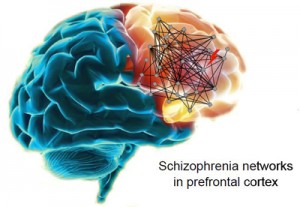 Developing safe, targeted, and effective drugs for mental illnesses has increasingly become a struggle for the pharmaceutical industry.
Developing safe, targeted, and effective drugs for mental illnesses has increasingly become a struggle for the pharmaceutical industry.
As a result, there has been a gradual withdrawal of research dollars from this area, despite the fact that globally, the mental health pharmaceutical market is more than $80 billion.
Despite the ongoing need to treat mental health problems, research has not produced a novel neurological drug in the past 30 years. Additionally, many drugs currently on the market have been increasingly identified with negative side effects and limited efficacy.
Until recently, most mood disorders were attributed to an imbalance in a single neurochemical, such as serotonin. Increasingly, scientists have come to acknowledge that this is an oversimplification that can lead to counterproductive treatment. Due to the complexity of brain networks, these pharmaceutical compounds may work to alleviate some symptoms, but exacerbate others. They may even contribute to new problems, such as cognitive impairment, suicide, or diabetes.
High cost, negative press, and the lack of an efficacy model have resulted in the drying up of the drug pipeline for pharmaceutical treatment of mental illness. In its place is a science focused on understanding the brain as a series of networks, each of which supports a different aspect of our experience and behaviour. By this analysis, the brain is like a city: you can’t make sense of the bigger picture without knowing how everything interacts.
New technology and an increased focus on traumatic brain injury (TBI) and post-traumatic stress disorder (PTSD) have led to a greater understanding of the complexity of the brain. Instead of focusing on single chemical neurotransmitters affecting cognition and behavior, mental health research has evolved to address neurological functions through models of neural circuits known as “neural networks”.
These functional brain regions can be influenced using non-invasive technologies, brain training and applications like chiropractic. Many scientists see this movement towards identifying and modifying neural networks as a more effective and safer way to assess and treat problems related to cognition, behaviour, and emotion.
As the Prozac nation fades, the empire of the circuit-based human will rise, probably to the point where dinner party chatter will include the misplaced jargon of neuroscience.
Adapted from: The Dana Foundation. Brain in the News. 2013. 20 (8).
